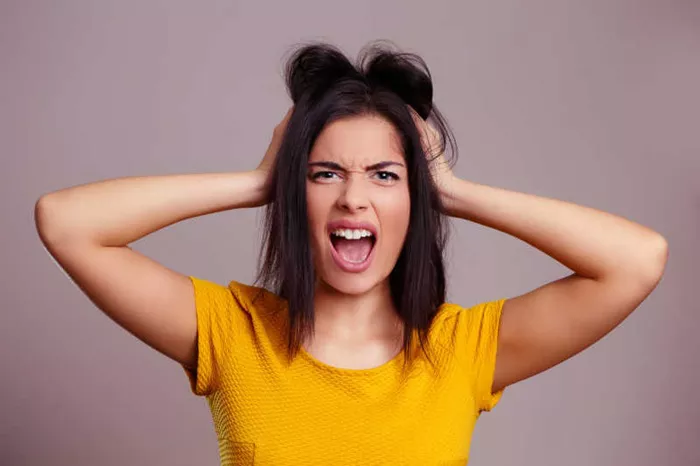Undergoing a hair transplant is a significant decision that requires careful post-operative care to ensure optimal results. One common concern among patients is the urge to scratch their scalp during the recovery phase. Scratching prematurely can dislodge grafts, cause infections, or hinder healing. Understanding the appropriate timeline and safe alternatives is crucial for protecting newly transplanted hair follicles while maintaining comfort.This article explores the critical healing stages, risks associated with scratching, and expert-approved methods to alleviate itching without compromising results.
The Healing Process After a Hair Transplant
Initial Recovery Phase (First 72 Hours)
The first three days post-surgery are the most delicate. During this period, hair grafts are still settling into the scalp, and any friction or pressure can dislodge them. Patients must avoid touching or scratching the treated area entirely. The scalp may feel tight, tender, or mildly itchy due to the formation of tiny scabs and the natural healing response.
Crust Formation and Shedding (Days 4–10)
Between the fourth and tenth day, small crusts begin to form around the transplanted follicles as part of the healing process. While mild itching is normal, aggressive scratching can remove these protective crusts prematurely, leading to graft loss or scarring. Gentle washing with a surgeon-recommended shampoo helps soften and remove crusts safely.
Early Growth Stage (Weeks 2–4)
By the second week, most scabs have fallen off, and the scalp starts to feel less sensitive. However, itching may persist due to dryness or new hair growth. Patients can lightly pat their scalp but must still avoid vigorous scratching. Moisturizing sprays or prescribed topical solutions can provide relief without risking damage.
Risks of Scratching Too Soon
Graft Displacement
Newly implanted follicles are fragile and require time to anchor securely. Scratching within the first week can physically dislodge grafts, leading to patchy results or failed transplants. Even slight friction from fingernails can disrupt the healing process.
Infection and Inflammation
The scalp is vulnerable to bacterial infections during the early recovery phase. Scratching introduces dirt, oils, and bacteria into open micro-channels, increasing the risk of folliculitis or prolonged inflammation. Infections not only delay healing but may also impact hair growth outcomes.
Scarring and Poor Aesthetic Results
Excessive scratching can cause trauma to the scalp, leading to visible scars or uneven texture. This is particularly concerning for patients undergoing Follicular Unit Extraction (FUE), where individual extraction sites need to heal smoothly for a natural appearance.
Safe Alternatives to Scratching
Cool Compresses
Applying a clean, cool compress can soothe itching without direct contact. The cold temperature reduces inflammation and numbs the area temporarily. Patients should avoid ice packs directly on the scalp and instead use a soft cloth.
Prescribed Topical Solutions
Surgeons often recommend specialized sprays or lotions containing hydrocortisone or aloe vera to alleviate itching. These products moisturize the scalp while promoting healing. Patients must follow application guidelines to prevent overuse.
Gentle Massaging Techniques
After the first two weeks, light patting or circular motions with clean fingertips can relieve itching. This should be done very carefully, avoiding any pressure on the transplanted zones.
When Is It Safe to Scratch Normally
Full Healing Timeline (3–6 Months)
Most patients can resume normal scalp care, including gentle scratching, after the third month. By this stage, follicles are firmly secured, and the risk of damage is minimal. However, individual healing rates vary, so consulting a surgeon before resuming aggressive scratching is advisable.
Signs of Complete Recovery
A fully healed scalp shows no redness, scabbing, or tenderness. Hair growth becomes noticeable, and itching subsides naturally. If persistent itching occurs beyond six months, a follow-up visit is recommended to rule out complications like dermatitis or fungal infections.
Expert Tips for Minimizing Itchiness
Hydration and Diet
Staying hydrated and consuming foods rich in vitamins A, C, and E supports skin health and reduces dryness-related itching. Omega-3 fatty acids from fish or flaxseeds also promote scalp hydration.
Avoiding Irritants
Harsh shampoos, heat styling, and excessive sun exposure can exacerbate itching. Patients should use mild, sulfate-free products and wear a hat outdoors to protect the scalp.
Stress Management
Stress can intensify the perception of itching. Techniques like meditation or light exercise help manage discomfort without physical intervention.
Post-Transplant Itching
While mild itching is expected during recovery, certain symptoms warrant professional evaluation. Persistent or severe itching beyond four weeks may indicate complications such as contact dermatitis, fungal infections, or allergic reactions to post-operative medications. Additional warning signs include excessive redness, pus formation, or sudden hair loss around grafted areas. Patients experiencing these symptoms should promptly consult their surgeon for targeted treatments, which may include antifungal creams, steroid solutions, or antibiotic therapy. Early intervention prevents long-term damage and ensures the transplanted follicles remain healthy. Monitoring scalp condition and maintaining open communication with medical providers are key to a smooth recovery.
Conclusion
Patience is essential during the hair transplant recovery process. While itching is a normal part of healing, scratching too soon can jeopardize results. Following post-operative instructions, using safe alternatives, and monitoring the scalp’s progress ensure successful graft survival and optimal hair growth. Consulting a specialist for persistent discomfort guarantees personalized care tailored to individual needs. By adhering to these guidelines, patients can achieve a healthy, natural-looking head of hair without compromising their investment.
Related Topics

